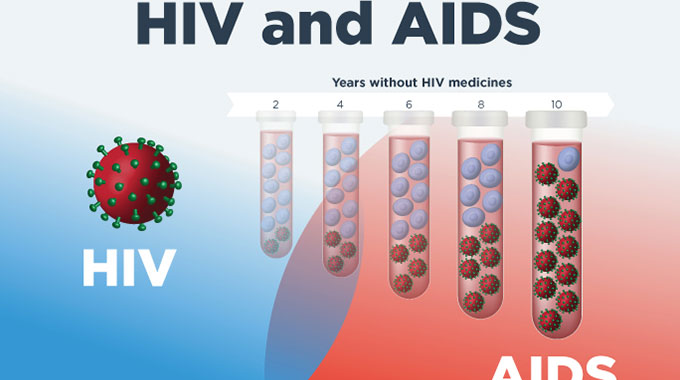EDITORIAL COMMENT: Momentum against HIV and Aids must be intensified

We have seen commendable successes in the national response to the HIV and Aids pandemic since the first Aids case was recorded around 1986.
The epidemic peaked in the 1990s when the national HIV prevalence rate was around 26 percent. That was a time of high morbidity and mortality as access to treatment, care and prevention methods were still at their lowest. Then, the perception of risk among the sexually active, and the general population as well was very low.
It was a huge challenge which the Government and its partners at home and abroad had to take head-on. In the late 1990s into the early 2000s the Government introduced the Aids Levy, and created the National Aids Council (Nac), two very innovative measures that attracted worldwide acclaim at the time.
As these and more strategies were put in place over the years, the burden began to lessen. The HIV prevalence rate dropped steadily from the 1990s high of 26 percent to around 13, 3 percent in 2017. It has held at that position up to now. The number of people accessing treatment has been progressively rising meaning that more and more people are now living healthier lives. With more people on medication and living healthier lives, Aids-related deaths have been slowing from 54 000 in 2010 to 22 000 in 2018.
In addition, many studies that have been conducted in recent years show that use of condoms has been notably rising as awareness around the dangers of HIV and Aids continues to improve. Possibly because of greater condom use, the number of new HIV infections in the country has gone down to 38 000 from 45 000 in 2015.
Indeed, the progress of the past few years indicates that the epidemic could soon be contained.
A new Nac report puts that progress into perspective as we reported yesterday.
“In terms of reaching the 2020 90-90-90 global Aids targets, we have achieved the first goal of ensuring that 90 percent of people know their status. We are currently at 91 percent and on the second goal which is to ensure that at least 90 percent of infected people are on antiretroviral treatment we are at 83 percent. We are also working on the third 90 which is to ensure that 90 percent of those on treatment achieve viral suppression and we are at 77 percent,” says the document.
In 2014, the Joint United Nations Programme on HIV/Aids and partners launched the 90–90–90 targets with the aim to diagnose 90 percent of all HIV-positive persons, provide antiretroviral therapy for 90 percent of those diagnosed, and achieve viral suppression for 90 percent of those treated by next year.
This means that over the past five years of the 90-90-90 campaign Zimbabwe has been able to achieve the first target, that of getting 90 percent of all HIV-positive people tested so that they know their status, enabling them as individuals, the Government and Aids service organisations to take appropriate measures on the basis of knowledge. On the second goal of improving access to treatment, we are seven percent short of target. We see this as a commendable record.
On the third objective of achieving viral suppression for those on treatment we have done fairly as a country since 2014 as the success rate is 77 percent.
All indicators considered, we argue that the country has done very well under very difficult circumstances.
However, it is important for the Government and its partners to hasten the momentum that has been there since the early 2000s for the fight against HIV and Aids to be won.
Activities to educate the masses to be aware of the risk of HIV and Aids must be intensified so that a larger proportion of the people remain faithful to their sexual partners. If some choose to stray, which we strongly discourage, the people must consistently and correctly use condoms to limit their chances of infection with HIV.
In addition, the sexually-active, even those who aren’t sexually-active given that infection is not only through sex, must make it a habit to get tested for HIV so that they know whether they are positive or not.
For those who would test positive, strategies must be put in place to ensure that they are put on treatment which they should take as prescribed and religiously.












Comments